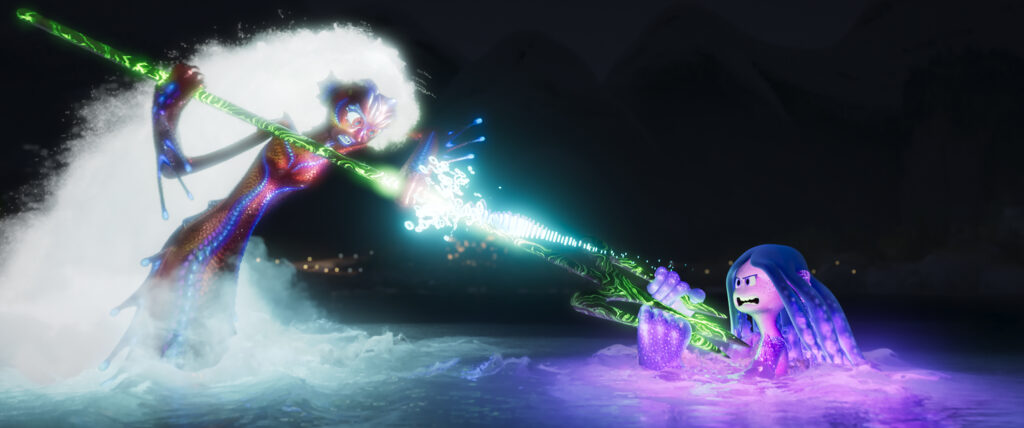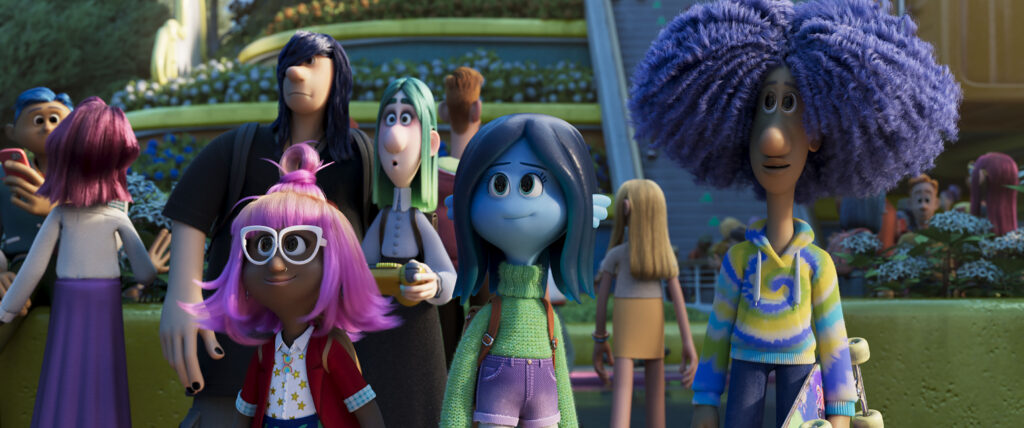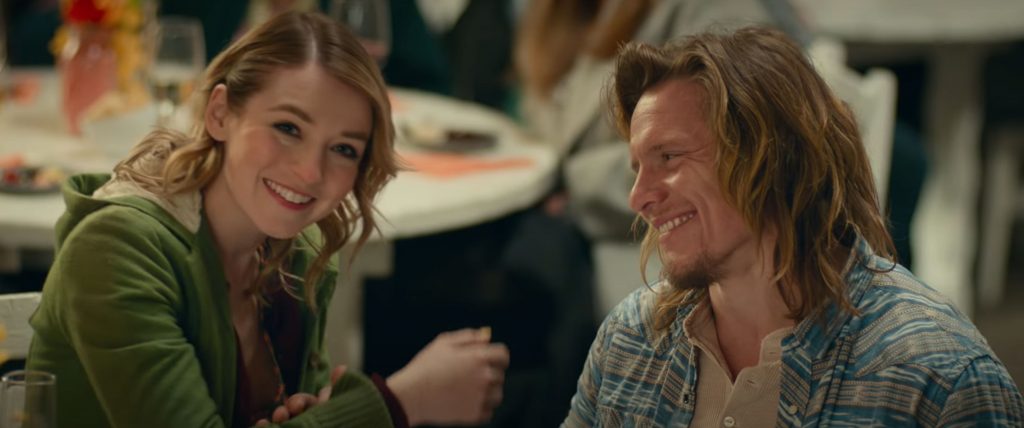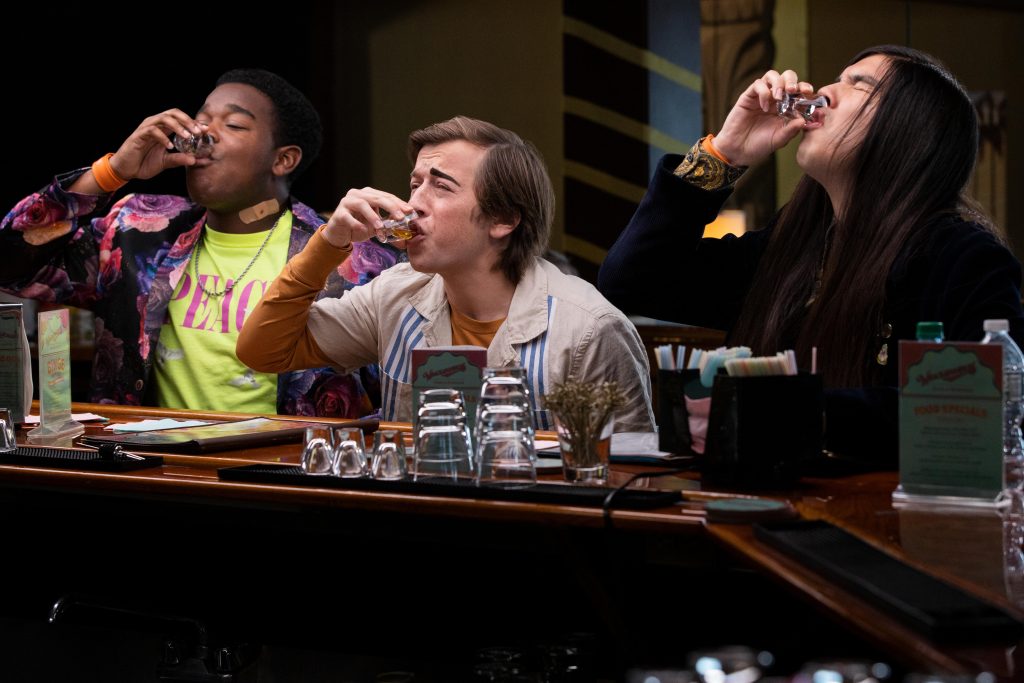June 29, 2023
by Carla Hay

“Ruby Gillman, Teenage Kraken”
Culture Representation: Taking place in the U.S. city of Oceanside, the animated film “Ruby Gillman, Teenage Kraken” features a cast of characters depicting humans, krakens and mermaids.
Culture Clash: A female teenage Kraken, whose family has been hiding its kraken identity from humans, uncovers an ancient legacy when a rival new student enrolls in her school.
Culture Audience: “Ruby Gillman, Teenage Kraken” will appeal primarily to people who want to see reliably entertaining animated films with simple messages about self-confidence and being yourself.

“Ruby Gillman, Teenage Kraken” does what it’s supposed to do as a family-oriented animated film. The story and visuals are appealing, but improvement was needed in world building and explaining various characters’ backstories much earlier in the movie. If you don’t know what a kraken is and have no interest in finding out, then skip this movie. Everyone else will at least be mildly entertained by this animated movie that is adequate but not a classic.
Directed by Kirk DeMicco, “Ruby Gillman, Teenage Kraken” has an over-used story of a teenage girl trying to fit in at her school while having a crush on a boy whom she wants to date. However, the movie should be commended for at least taking a unique and darking approach of making a kraken family at the center of the story. It’s something that no animated film from a major Hollywood studio has ever done before. Pam Brady, Brian C. Brown and Elliott DiGuiseppi wrote the screenplay for “Ruby Gillman, Teenage Kraken,” with additional screenplay material written by DeMicco, Meghan Malloy and Michael McCullers.
A kraken is a giant mythical sea monster whose origins are off of the coast of Norway. In “Ruby Gillman, Teenage Kraken,” 16-year-old Ruby Gillman (voiced by Lana Condor) and her family are living “under the radar” in the U.S. city of Oceanside, by having the appearance of humans and trying fit in as human beings. What’s kind of silly about the movie is that the members of this kraken family all have blue skin, which makes it obvious that they’re not human. It would look worse in a live-action film, but in an animated film, there’s more room for suspension of disbelief.
Ruby is intelligent and compassionate, but she insecure about her physical appearance, and she has a slightly goofy personality. Her overprotective mother Agatha Gillman (voiced by Toni Collette) is a successful real-estate agent who dominates the household and is the main parental disciplinarian. Ruby’s laid-back father Arthur Gillman (voiced by Colman Domingo) is much more lenient and understanding of Ruby’s curiosity. Also in the household is Ruby’s 7-year-old brother Sam Gillman (voiced by Blue Chapman), who has the “cute kid” role in the movie.
Agatha and Arthur know that their family is “different,” but they have instilled the attitude in their children that they must blend in with humans as much as possible. Agatha’s number-one rule for her children (especially Ruby) s that they must never go inside or near a large body of water. Needless to say, Agatha is horrified and disapproving when Ruby says she’s interested in studying marine biology for a possible career.
Ruby attends Oceanside High School, where she has a small circle of three friends who are all considered “misfits,” just like Ruby. Margot (voiced by Liza Koshy), who is queer or a lesbian, loves musical theater and is the most talkative and outspoken of the friends. Trevin (voiced by Eduardo Franco), the quietest of the group, is addicted to playing hand-held video games. Bliss (voiced by Ramona Young) is moody, sarcastic, and dresses like a nerdy Goth.
Ruby prides herself on being a “mathlete”—someone who excels at math and at being an athlete. She has a big crush on a fellow student whom she’s tutoring in math. His name is Connor (voiced by Jaboukie Young-White), who is a free-spirited skateboarder. The school’s prom is coming up. Ruby, Connor, and Ruby’s friends all think the concept of a prom is a “post-colonial patriarchal construct” that they think is very uncool.
However, Margot ends up changing her mind about boycotting the school’s prom when her girl crush asks Margo to be her prom date. Trevin and Bliss then want to go to the school’s prom too. Feeling left out, Ruby decides she wants to also attend the prom, with Connor as her date. Ruby tries to work up the courage to ask Connor, who’s attracted to her, but Ruby isn’t seeing the obvious signs of this attraction.
The added allure for Ruby to go to the prom is that it will be an act of rebellion against her mother. As soon as Agatha found out that the prom will take place in a building that’s near the ocean, she forbade Ruby from going. Margot, Trevin and Bliss convince Ruby that she shouldn’t be so afraid of getting her mother’s disapproval for something that should be a fun and positive experience for Ruby. These three pals tells Ruby that she should lie to Agatha about where she is going on the prom night and go to the prom instead.
Shortly before Ruby decides she’s going to ask Connor to be her prom date, he accidentally falls into the ocean and almost drowns. Ruby dives in to rescues him. And that’s when Ruby finds out that she can turn into a giant kraken. She’s horrified and now knows why her mother Agatha forbade her to go into any large body of water. Connor is unconscious and doesn’t see who rescued him. After a short stay in a hospital, he is released.
Meanwhile, there’s a new student at Oceanside High School: a confident, physically attractive redhead named Chelsea Van Der Zee (played by Annie Murphy), who witnessed this rescue and knows that Ruby wants to keep Ruby’s kraken identity a secret. And so, Chelsea takes credit for rescuing Connor. People believe Chelsea’s fabricated “hero” story, and she immediately becomes popular. As already shown in the “Ruby Gillman, Teenage Kraken” trailers, Chelsea has a secret identity too: She’s really a mermaid.
There are more Gillman family secrets that are revealed to Ruby, including a longtime feud between mermaids and krakens. Agatha’s bold and confident mother, whose only name in the movie is Grandmamah (voiced by Jane Fonda), comes from a long line of kraken warrior queens. Grandmamah is estranged from Agatha, who refused to follow in her mother’s footsteps.
Ruby also finds out that 15 years earlier, there was a Battle of the Tridents, where mermaids were defeated and went into hiding. There’s an all-powerful trident that mermaids and krakens have been battling over for several generations. When Ruby decides she’s going to embrace her kraken heritage and asks Grandmamah to mentor her, you can easily guess what the movie’s big showdown will be.
Other featured characters in this movie includes a local tour guide Gordon Lighthouse (voiced by Will Forte), who has a boat and who believes that krakens are very dangerous for people. Brill voiced by Sam Richardson) is Agatha’s younger brother, who is earnest and dorky. He’s the type who wears Hawaiian shirts, shorts and sandals with socks. Brill ends up getting involved in some of Ruby’s adventures.
“Ruby Gillman, Teenage Kraken” has some explanations about kraken and mermaid lore in the middle of the movie, when those explanations should have been earlier in the film. The characters of Ruby, Agatha and Grandmamah have well-defined personalities, but some other characters (such as Sam and Bliss) don’t do much except take up space. Other characters (such as “cool love interest” Connor, “mean girl” Chelsea and “meddling neighbor” Gordon) are the types of characters that have been in many other types of scripted entertainment.
Some viewers might compare “Ruby Gillman, Teenage Kraken” to the 2022 Oscar-nominated Pixar movie “Turning Red” because there are some striking similarities. “Turning Red” is a much better movie overall, but “Ruby Gillman, Teenage Kraken” isn’t an intentional ripoff. “Ruby Gillman, Teenage Kraken” was in development for years prior to it getting made, so any similarities to “Turning Red” are coincidental.
Everything in “Ruby Gillman, Teenage Kraken” is just fine or average, but not so terrible that it feels like a complete waste of time to watch it. There’s a jumbled explanation of the Battle of the Tridents, but it’s not so confusing that viewers will feel lost. At the very least, anyone who watches “Ruby Gillman, Teenage Kraken” will see a teenage heroine who is very different from the usual teenage heroines in other animated films.
Universal Pictures will release “Ruby Gillman, Teenage Kraken” in U.S. cinemas on June 30, 2023.






